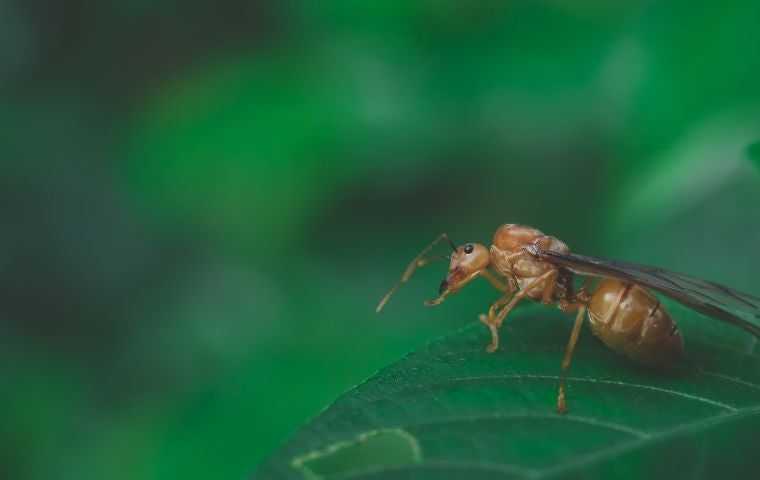Queen Ants
September 03, 2023 - Ants

Queen ants are the central reproductive individuals in an ant colony, and they play a pivotal role in the social structure and success of the colony. Here is a comprehensive overview of queen ants, covering their biology, life cycle, behavior, and significance within ant colonies:
Biology: Queen ants are female ants with distinct physiological and morphological differences from worker ants. They are typically larger and have well-developed reproductive organs. The size and appearance of queen ants can vary significantly among different ant species.
Life Cycle: The life cycle of a queen ant begins when a young virgin queen leaves her parental colony in a nuptial flight, during which she mates with one or more male ants (drones). After mating, she loses her wings, as they are no longer needed, and she establishes her own colony. The newly mated queen then excavates a small chamber and lays her first batch of eggs.
Egg-Laying: Queen ants are prolific egg layers and can produce thousands to millions of eggs throughout their lives, depending on the species. The eggs develop into larvae, then pupae, and eventually emerge as worker ants or new queens and male ants. The queen's primary role is to maintain the colony's reproductive population by laying eggs.
Behavior: Queen ants exhibit a range of behaviors. They are primarily responsible for regulating the colony's reproductive caste composition. Queens release chemical signals called pheromones that suppress the development of new queens and maintain the worker caste. They also communicate with workers through various chemical and physical cues, guiding the colony's activities.
Longevity: Queen ants can have remarkably long lifespans compared to worker ants, often living several years or even decades, depending on the species. Some tropical ant species may have shorter-lived queens, while temperate species tend to have longer-lived queens due to hibernation during winter months.
Importance in the Colony: Queens are essential to the colony's survival and growth. They are the sole egg layers and determine the colony's size and genetic diversity. In many species, the queen also has a significant impact on the colony's social structure, as she exerts control over the worker caste's behavior through pheromonal communication. Without a healthy and productive queen, a colony can decline or fail.
Replacement: In some circumstances, a colony may replace an old or failing queen. This can happen if the queen becomes less productive or dies. Worker ants can raise a new queen by feeding a larva a special diet called "royal jelly," which triggers its development into a replacement queen.
Monogyny vs. Polygyny: Ant species can exhibit different reproductive strategies. Monogynous colonies have a single queen, while polygynous colonies can have multiple queens. The presence of multiple queens can lead to larger colonies with more workers, increasing their chances of survival.
Egg Fertilization: Queens can control the fertilization of eggs. They can selectively lay fertilized eggs that develop into female workers and new queens or unfertilized eggs that become male ants (drones). The queen's ability to control the caste composition of the colony is vital for colony dynamics.
Pheromonal Communication: Queens release pheromones to maintain social order within the colony. These chemical signals can inhibit the development of new queens and suppress worker reproduction. Worker ants are highly responsive to the queen's pheromones and adjust their behavior accordingly.
Mating Behavior: After mating during the nuptial flight, queens store sperm in a specialized organ called the spermatheca. They can use this stored sperm to fertilize eggs throughout their lifetime, potentially allowing for a diverse genetic makeup within the colony.
Colony Growth: The queen's egg-laying capacity is essential for colony growth. During the early stages of colony establishment, she focuses on producing worker ants to forage and care for the brood. As the colony matures, she may shift her efforts towards producing new queens and males for future nuptial flights.
Nurturing Role: Queen ants are not passive egg layers; they play an active role in nurturing the first batch of worker ants. They feed the larvae with their own saliva, rich in nutrients, and care for them until they mature into adult workers capable of taking over these tasks.
Longevity: The longevity of a queen is a key factor in colony success. A longer-lived queen can continue to lay eggs, ensuring the colony's continuity. In contrast, if a queen dies prematurely, it can lead to a decline in the colony's population and eventual collapse.
Independent Founding: Some ant species practice independent colony founding, where a single queen establishes a new colony on her own. In contrast, others engage in cooperative colony founding, where multiple queens work together to initiate a colony.
Queen Replacement: In established colonies, queens can be replaced if they become less productive or die. Worker ants may select a young larva and provide it with royal jelly to develop into a new queen. This replacement ensures the colony's reproductive capacity remains intact.
Ecosystem Engineers: Ant colonies, with their queens at the center, are often regarded as ecosystem engineers. They can influence soil composition, nutrient cycling, and plant growth, making them essential components of many terrestrial ecosystems.
Predation and Defense: In some ant species, queens have specialized defensive roles. They may have enlarged mandibles or venomous stingers to protect the colony from threats. Their physical adaptations for defense can vary depending on the ant species and their ecological niche.
Queen ants are not just passive egg layers but central figures in the complex social structures of ant colonies. Their reproductive strategies, social interactions, and roles within the colony are highly evolved and contribute significantly to the success of ant colonies and their ecological impact. Understanding these aspects of queen ants sheds light on the fascinating world of ant societies and their ecological importance.
Customer Review
Bret is incredible and his service is top notch. During the spring of 2020 we had a skunk infestation and he removed 12 skunks. He also solved our raccoon and squirrel issues. Our pest issues have been nil since hiring Bret!


